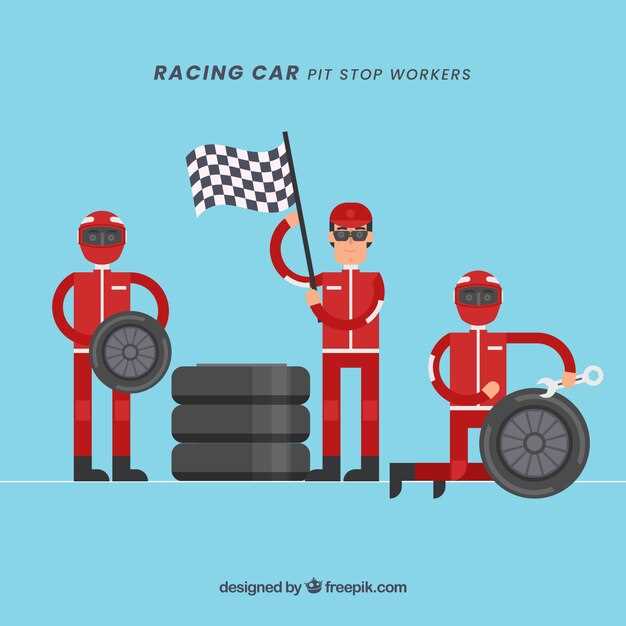
In the high-octane world of racing, the choice between manual and automatic transmissions can significantly influence a driver’s performance and overall experience on the track. Each transmission type offers unique advantages and challenges, making the decision a pivotal one for enthusiasts and professional racers alike.
On one hand, manual transmissions provide a level of control that many seasoned racers cherish. The ability to precisely select gears allows drivers to optimize engine performance and adjust their driving style to suit various racing conditions. This connection to the vehicle can enhance responsiveness and provide a more immersive racing experience.
Conversely, automatic transmissions have made significant strides in recent years, offering remarkable speed and efficiency. Advanced technologies, such as dual-clutch systems and paddle shifters, enable quick gear changes that can rival those of skilled manual drivers. These innovations appeal to both amateur racers seeking ease of use and professionals aiming for split-second advantages on the track.
This article will delve into the key differences between manual and automatic transmissions in the context of racing, exploring the strengths and weaknesses of each system. By examining factors such as driveability, performance metrics, and the evolving landscape of transmission technology, we aim to provide a comprehensive overview that helps racers make an informed choice tailored to their unique racing goals.
Manual vs Automatic Transmission for Racing: Which Is Better?

When it comes to racing, the choice between manual and automatic transmission can significantly impact performance. Each type has its own advantages and disadvantages that cater to different driving styles and race conditions.
-
Manual Transmission:
-
Driver Control: Manual transmissions offer greater control over gear selection, allowing skilled drivers to optimize engine power and torque for maximum performance.
-
Weight: Typically, manual transmissions are lighter than their automatic counterparts, contributing to overall vehicle weight reduction, which is crucial in racing scenarios.
-
Engagement: Many drivers find the manual experience more engaging and enjoyable, enhancing driver connection to the vehicle.
-
Acceleration: In certain conditions, a manual transmission can provide faster acceleration through well-timed gear shifts compared to automatic systems.
-
-
Automatic Transmission:
-
Ease of Use: Automatic transmissions are easier to operate, allowing drivers to focus on other aspects of racing such as cornering and braking strategies.
-
Consistency: With advanced technology, modern automatic transmissions can execute gear changes faster and more consistently than a human driver, which can result in better lap times.
-
Adaptive Features: Many automatic systems come with adaptive modes that adjust gear changes based on driving conditions, enhancing overall performance on the track.
-
Total Control via Paddle Shifters: Some drivers prefer automatics equipped with paddle shifters, which provide manual-like control without fully relinquishing the benefits of an automatic system.
-
Ultimately, the choice between manual and automatic transmission in racing depends on personal preference, driving skill, and the specific racing environment. Professional drivers often favor manual for its inherent control, while amateur racers may prefer the convenience of automatic. Each type has its merits, so understanding individual needs and capabilities is essential for making the best choice.
Performance Advantages of Manual Transmission in Racing
Manual transmission offers several performance advantages in racing that can significantly affect a driver’s competitiveness on the track. One of the primary benefits is the direct control it provides to the driver. This level of engagement allows racers to optimize gear selection based on real-time feedback from the vehicle, enabling precise adjustments to power delivery and acceleration.
Additionally, manual transmissions typically have a lighter weight compared to their automatic counterparts. This reduced weight can enhance overall vehicle performance, improving acceleration and responsiveness. Because of the lack of complex hydraulic systems found in many automatic transmissions, manual options can also lead to decreased mechanical drag, allowing the engine to deliver power more efficiently.
Manual transmissions often result in quicker shifts during racing, especially when equipped with features like short-throw shifters. This can translate to lower lap times as drivers can maximize engine RPMs by seamlessly moving through gears without waiting for an automatic system to recalibrate. Furthermore, experienced drivers can downshift at optimal moments, effectively using engine braking to optimize cornering speeds.
Reliability is another significant advantage of manual transmissions in racing scenarios. Since they have fewer moving parts and simpler designs compared to automatic systems, they tend to be more durable under extreme conditions. This reliability allows teams to focus more on performance tuning and less on potential transmission failures during races.
Lastly, many racing enthusiasts argue that the driving experience with a manual transmission is unmatched. The tactile feedback and engagement it offers can enhance driver confidence, ultimately leading to improved performance on the track. Consequently, for many racers, the choice of a manual transmission can result in a more fulfilling and effective racing experience.
How Automatic Transmission Technology Enhances Competitive Racing

Automatic transmission technology has revolutionized competitive racing by enhancing vehicle performance and simplifying driver engagement. One of the significant advantages is the ability to execute quicker gear shifts compared to manual systems. In high-stakes racing scenarios, where every millisecond counts, automatics reduce the time lost during gear changes, allowing drivers to maintain momentum and optimize lap times.
Moreover, modern automatic transmissions are equipped with advanced features such as adaptive shift logic and electronic control units. These systems analyze driving patterns and track conditions in real-time, adjusting shift points for optimal performance. This allows racers to focus on strategic decisions rather than mechanical operation, significantly improving overall handling and control.
Automatic transmissions also provide a more consistent driving experience. Unlike manual gearboxes, which require precise input to prevent stalling or over-revving, automatics maintain stable engine performance regardless of the driver’s skill level. This consistency is crucial in competitive racing, where concentration on the track rather than gear management can make the difference between winning and losing.
Furthermore, with advancements such as dual-clutch systems and continuously variable transmissions (CVTs), automatic systems are becoming increasingly responsive. Dual-clutch transmissions allow for pre-selection of gears, facilitating seamless transitions and enabling higher power delivery. Meanwhile, CVTs provide an infinite range of gear ratios, ensuring that the engine operates within its optimal power band at all times, enhancing acceleration and efficiency.
In conclusion, the integration of automatic transmission technology in racing has proven to be a game-changer. By providing faster shifts, improved consistency, and enhanced responsiveness, automatics enable drivers to maximize their vehicle’s potential, leading to more competitive racing and thrilling performances on the track.
Driver Control and Adaptability: Manual vs Automatic in Race Situations
The choice between manual and automatic transmissions in racing significantly affects driver control and adaptability during high-stakes situations. Manual transmissions provide drivers with direct control over gear selection, allowing them to tailor engine RPMs and torque delivery to specific track conditions or driving styles.
In scenarios where precise power management is crucial, such as during corner exit or when navigating tight turns, manual transmissions enable racers to optimize their performance by maximizing traction and minimizing wheel spin. This level of control can be essential when facing variable track conditions, such as rain or slippery surfaces, where driver intuition and responsiveness become key factors in maintaining speed.
Automatic transmissions, particularly those with dual-clutch systems, have advanced significantly and offer quick shifts that can enhance lap times. However, they may limit the driver’s ability to modulate power in real-time compared to manuals. Automatic systems often prioritize efficiency and speed over the individual preferences of the driver, which may lead to scenarios where the car’s performance does not align with the driver’s instincts.
Moreover, the adaptability of a driver can be influenced by the transmission type. Manual-trained racers often develop a deeper understanding of their vehicle’s behavior, enhancing their ability to predict and react during critical moments. In contrast, drivers utilizing automatic systems may experience a reliance on technology, potentially diminishing their instinctive reactions to dynamic racing challenges.
| Aspect | Manual Transmission | Automatic Transmission |
|---|---|---|
| Control | High, direct gear management | Limited, dependent on system algorithms |
| Adaptability | Higher adaptability to changing conditions | Moderate adaptability, relies on pre-set programs |
| Driver Skill | Requires extensive skill and experience | More user-friendly for less experienced drivers |
| Performance | Potentially better in manual control scenarios | Quick shifts can improve lap times |
Ultimately, the choice between manual and automatic transmissions in racing boils down to personal preference, driving style, and the specific demands of the racing environment. While automatic systems offer convenience and efficiency, the manual transmission remains a favored option for those seeking complete control and adaptability on the track.






